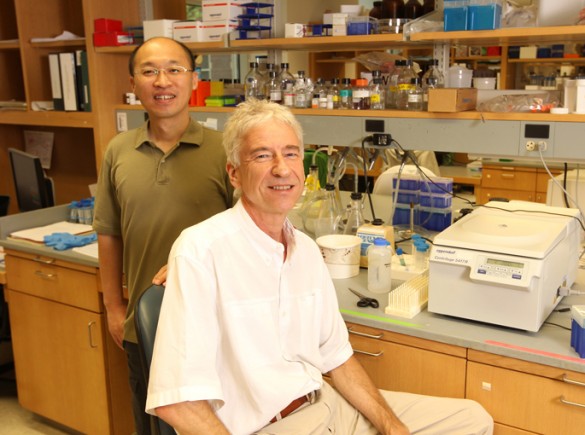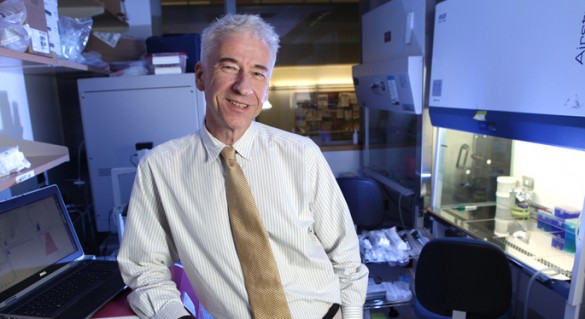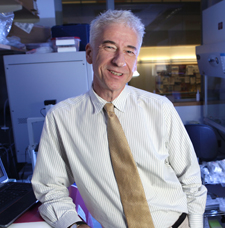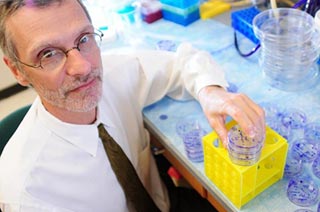
A protein essential for growth of normal breast tissue also may play a role in breast cancer, Vanderbilt University researchers have found.
Reporting recently in Nature Cell Biology, Yongliang Huo, Ph.D., and Ian Macara, Ph.D., for the first time describe the function of a protein called Par3L, which is expressed by a gene Macara and colleagues discovered at the University of Virginia in 2002.
Par3L is very similar to another protein, Par3, which functions as a polarity protein. That means it helps determine the “top-bottom” orientation of cells, including the adult stem cells that give rise to new epithelial tissues throughout the body, including the breast.
Epithelial cells line the ducts that produce milk in the breast, and pump it to the nipples. Normal growth of breast tissue occurs during each menstrual cycle, and during pregnancy and lactation. However, the biological role of Par3L itself was completely unknown.
Macara, who came to Vanderbilt in 2012 to chair the Department of Cell and Developmental Biology, and Huo, a postdoctoral fellow in his lab, found that Par3L is present specifically in mammary stem cells, and at the growing tips of mammary ducts.
If the gene for Par3L is deleted or “knocked down,” mammary stem cells in the mouse die, and mammary tissue doesn’t grow.
Huo discovered the mechanism: Normally Par3L “puts the brakes” on another polarity protein called LKB1, which suppresses mammary tissue growth. LKB1 is an important regulator of growth — loss of LKB1 can cause cancer in several organs, including the breast, but too much LKB1 can kill cells.
Without Par3L to tamp down the activity of this protein, LKB1becomes over-active and stem cells quickly die. If, on the other hand, Par3L is overexpressed, it acts as a “tumor promoter” by shutting down LKB1 and promoting uncontrolled growth, not only in the breast but in other tissues.
“We really need to know more about what this protein does and how it works,” said Macara, a Louise B. McGavock Professor in the department.
Eighty percent of all human cancers and all breast cancers arise from epithelial tissues. “There’s a lot of evidence that stem cells are the cells of origin of breast cancer,” he said, but “there’s still much that we don’t understand about the mammary stem cells themselves.
“How do they produce all the different cells in the ducts of the breast? How do they know when to grow and when to stop growing?
“We’re hoping to investigate this more rigorously in the future, and really begin to understand how polarity proteins contribute to the development of breast tissue, and to the defects that lead to breast cancer,” Macara said.
The study was supported by NIH grant GM070902 and a Department of Defense postdoctoral fellowship grant.















